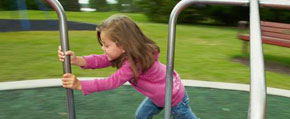We are pleased to announce an exciting new alliance between Active Living Research and GP RED to co-host and coordinate...
A Qualitative GIS Approach to Mapping Urban Neighborhoods with Children to Promote Physical Activity
Wridt, P. (2010). A Qualitative GIS Approach to Mapping Urban Neighborhoods with Children to Promote Physical Activity and Child-Friendly Community Planning. Environment and Planning B: Planning and Design, 37(1), 129-147.
As the obesity epidemic in children increases, it is important to consider the role of neighborhoods in supporting children’s physical activity and healthy development, especially in low-income communities where obesity levels among children are higher than for their middle-income counterparts. I present a participatory and qualitative GIS approach to mapping children’s own perceptions and use of their neighborhood for physical activity with ten and eleven year-olds growing up in a diverse low-income community in Denver, CO. Girls walk shorter distances to and use different types of community spaces for play and recreation from boys, some of which is explained by the differing environmental-socialization approaches employed by parents and carers. Children’s perceptions of risk align spatially with features of the built environment, but do not correlate with reported crime. Results illustrate the utility of qualitative spatial analysis to understand relationships between children’s perception, the built environment, and social factors that shape children’s active transport, leisure, and recreation in their neighborhood. Children’s local knowledge should be valued and solicited in community-level health and planning interventions to promote physical activity.
Related Tools & Resources
STAY UP TO DATE
RECENTLY ADDED TOOLS & RESOURCES
MOVE! A BLOG ABOUT ACTIVE LIVING
The "Active Living Conference" aims to break down research and practice silos and...







